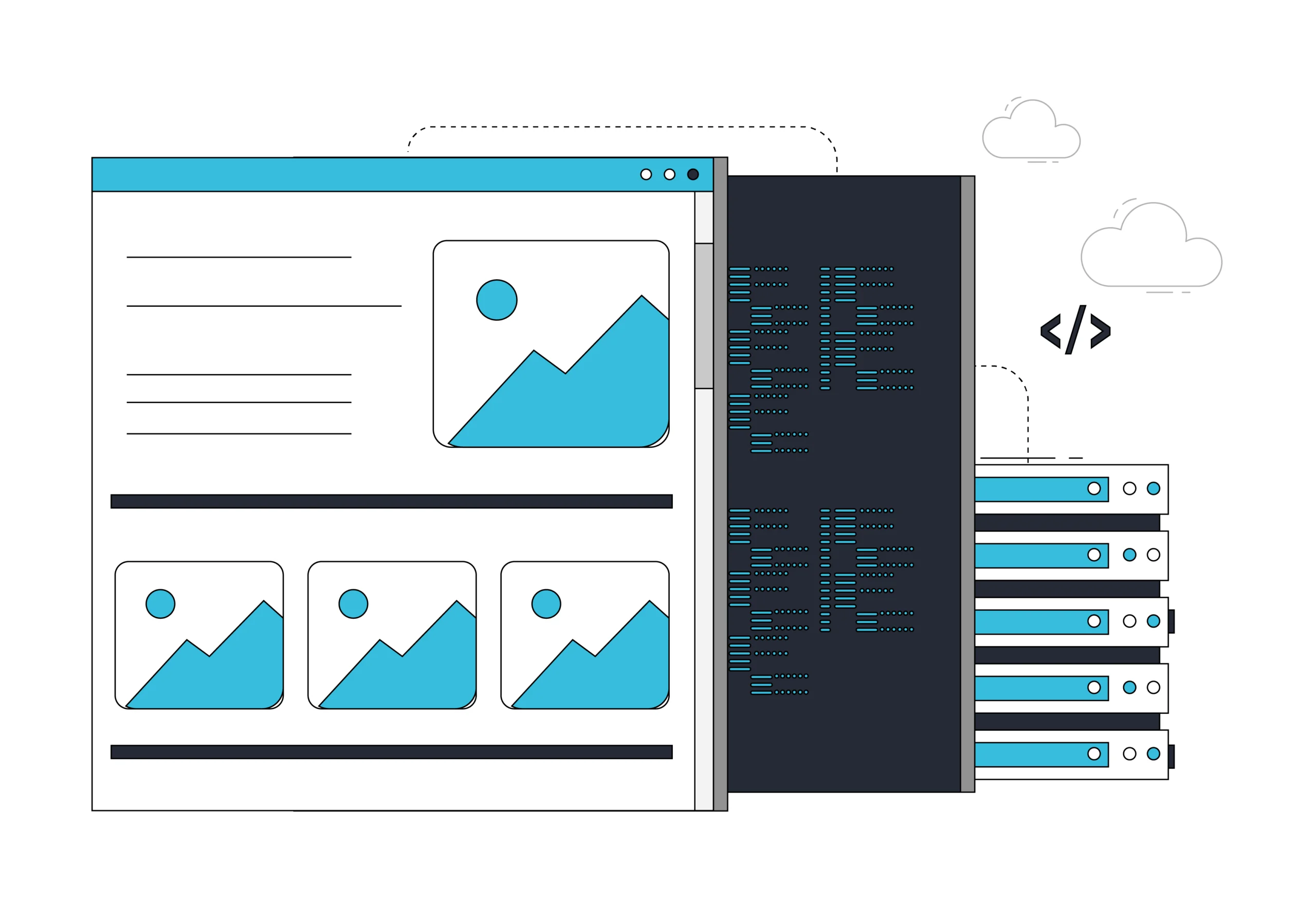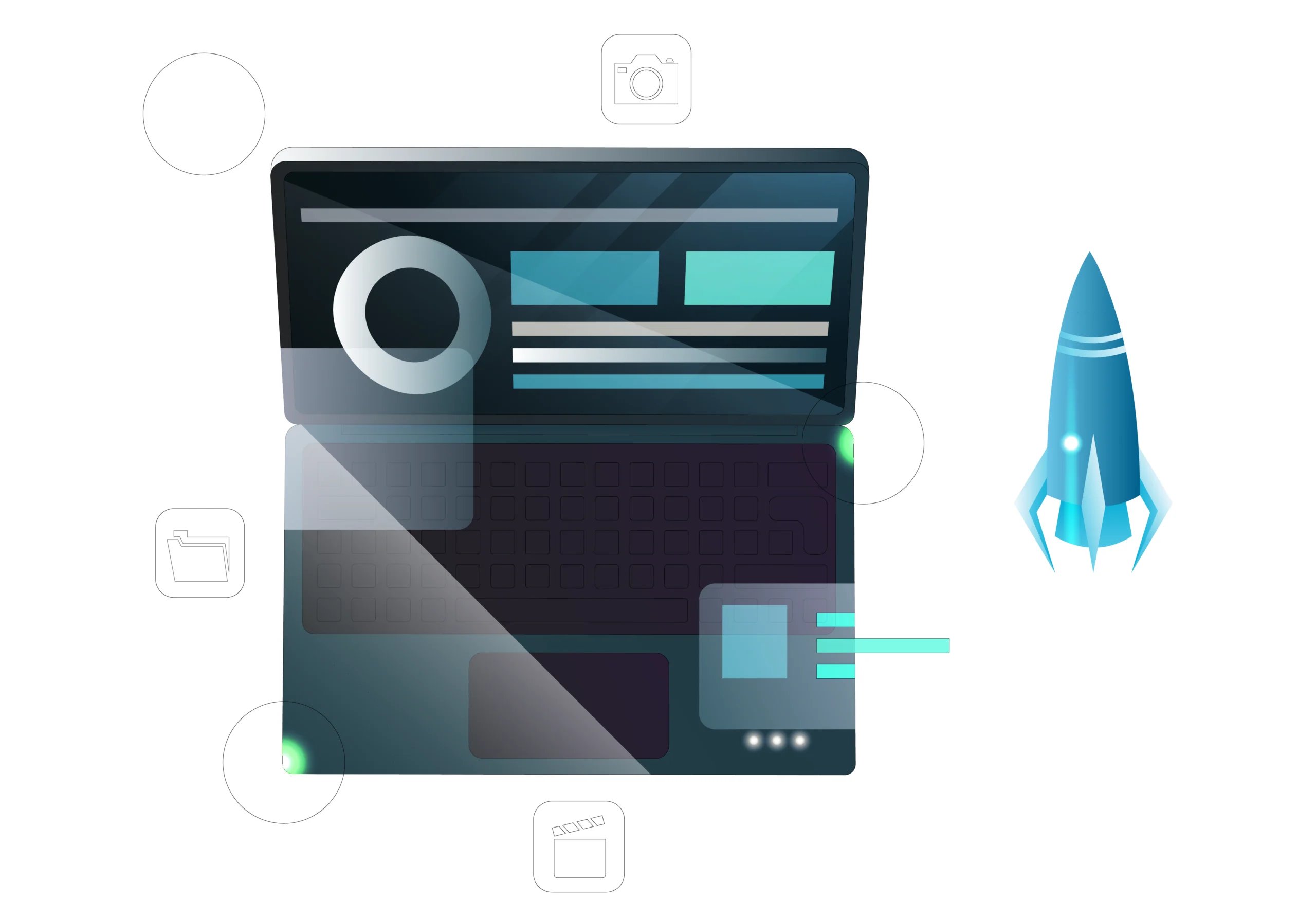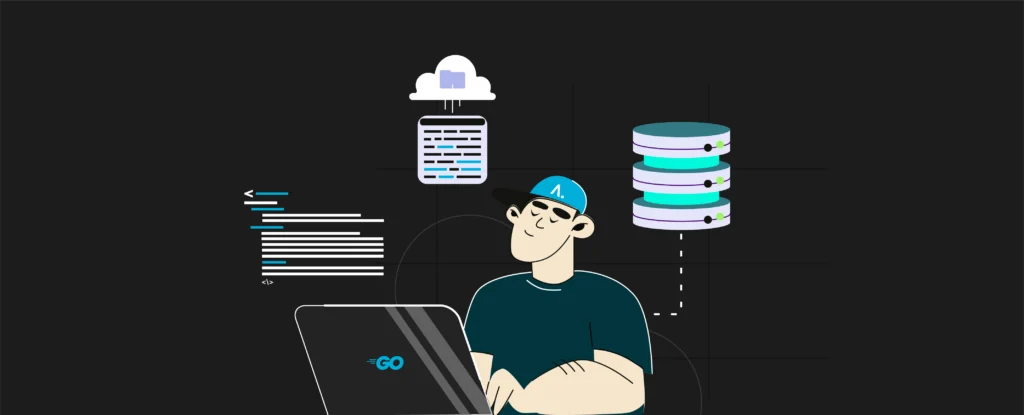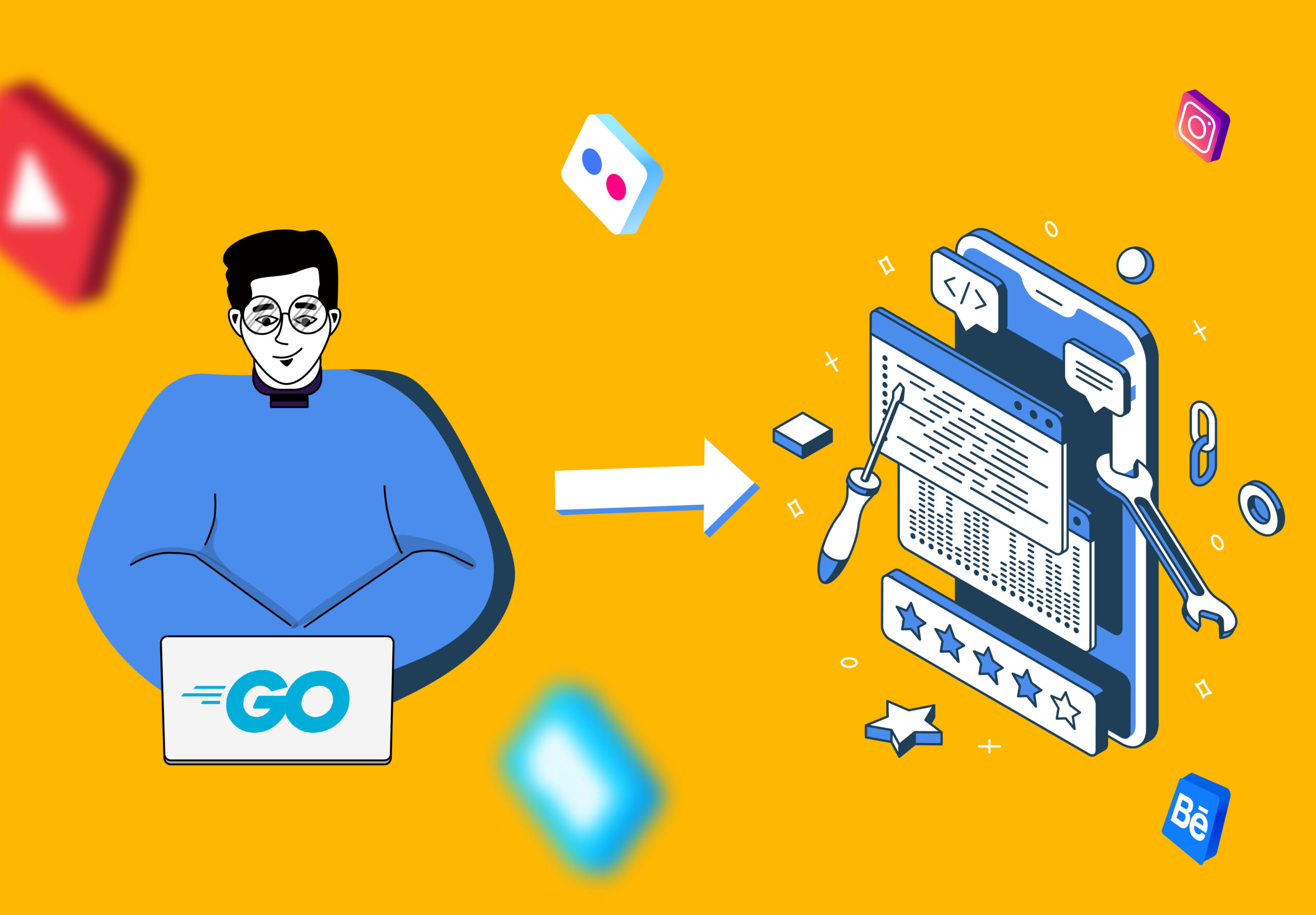Golang’s Sovereignty in Pioneering Scalable and Efficient System Architectures
Golang is the solid director of the powerful universe of programming languages, making an ensemble out of versatility and proficiency in the development of distributed frameworks. Due to its concurrent and adaptable features, it is a trustworthy tool for developers exploring the intricate universe of distributed architecture. In this examination, we pull back the drape on go programming language use cases, investigating its purposes and finding the progressive impact it has on the development of robust, high-performing distributed frameworks.  Beyond traditional programming standards, Golang shows a mastery much the same as that of a skilled artisan utilizing a flexible tool. Its convenience misrepresents a strong ability to deal with the challenges present in distributed systems, providing developers with a successful tool to deal with the subtleties of multiple activities running at once and smooth component communication.
Beyond traditional programming standards, Golang shows a mastery much the same as that of a skilled artisan utilizing a flexible tool. Its convenience misrepresents a strong ability to deal with the challenges present in distributed systems, providing developers with a successful tool to deal with the subtleties of multiple activities running at once and smooth component communication.
We investigate the different conditions that Golang works in as we set out on this journey into the universe of Golang use cases, ranging from cloud-native apps to microservices architectures. Golang is a famous language for creating distributed systems that can endure the afflictions of scale as well as thrive even with dynamic and demanding computing conditions as a result of its performance optimization and simplified syntax. Come explore how Golang has reformed distributed frameworks, where each line of code is a note in an ensemble of versatility, strength, and effectiveness. Whether you’re building the underpinning of a reliable cloud infrastructure or arranging the challenges of real-time data processing, Golang is a fundamental tool for building distributed systems that power the next generation of technological marvels.
A Sumptuous Exploration of Golang’s Use Cases and Their Resounding Influence
Google created the programming language Go, sometimes alluded to as Golang, and it has become well-known given its usability, effectiveness, and speed. Its wide acknowledgment across various industries can be credited to its flexibility, which makes it suitable for an assortment of use scenarios. Golang is an incredible tool for making high-performing, versatile web applications. It is ideal for making server-side applications as a result of its robust standard library and concurrent programming highlights. Go use cases are utilized by well-known systems like Gin and Echo, which let developers create web services rapidly and effectively. Go has arisen as the favored language for creating cloud-based applications and microservices. Due to its lightweight design, effective concurrency architecture, and fast compilation times, it’s an extraordinary decision for making reliable and versatile cloud applications. Go consolidates Kubernetes, a well-known container orchestration technology, to exhibit its true capacity in the cloud-native environment.
Golang use cases are an extraordinary choice for organizing applications due to their built-in support for concurrency and networking. Go’s simplicity and performance sparkle in use cases connected with networking, going from fundamental TCP/IP servers to complex network tools. Go is utilized by tools like Consul and Docker to work with effective network communication. Golang has built-in concurrency features, which make it a fantastic decision for creating distributed systems. It simplifies it to design parallel and concurrent processes, which work with the making of distributed applications that are fault-tolerant and adaptable. Disseminated key-esteem stores are regularly used in different distributed systems and are one of the Golang best use cases. Within the DevOps community, Go is popular for its capacity to make tools that computerize and improve infrastructure administration. With tools like Prometheus for monitoring and Terraform for infrastructure as code, Go is a critical component in working on the effectiveness and dependability of contemporary DevOps processes.
A Stately Deliberation on Golang’s Noble Utilization in Redefining eCommerce Standards
Golang, sometimes known as Go, is a powerful programming language that consolidates versatility, simplicity, and efficiency which makes it ideal for eCommerce applications. The abilities of concurrent programming consider the smooth management of numerous processes at once, working on the proficiency of eCommerce platforms. Since Go is statically typed, runtime errors in crucial transactions are less inclined to occur. This guarantees code reliability.  Due to the language’s speed and simple syntax, development cycles might be completed more quickly, which is significant given how rapidly eCommerce is evolving. Go’s garbage assortment framework assists with memory management, augmenting asset use for Golang applications with heavy traffic. Moreover, strong packages for networking, encryption, and secure communication are included in Go’s large standard library, which further improves the security of online transactions. The capacity of Go to make microservices makes it simpler to create eCommerce systems that are adaptable, maintainable, and modular. Its cross-platform interoperability further develops the client experience on different devices by guaranteeing steady execution in various situations. Go use cases’ prominence is developing because of its ability to satisfy the demands of the eCommerce business, which makes it an increasingly favored choice for making versatile and reliable eCommerce apps.
Due to the language’s speed and simple syntax, development cycles might be completed more quickly, which is significant given how rapidly eCommerce is evolving. Go’s garbage assortment framework assists with memory management, augmenting asset use for Golang applications with heavy traffic. Moreover, strong packages for networking, encryption, and secure communication are included in Go’s large standard library, which further improves the security of online transactions. The capacity of Go to make microservices makes it simpler to create eCommerce systems that are adaptable, maintainable, and modular. Its cross-platform interoperability further develops the client experience on different devices by guaranteeing steady execution in various situations. Go use cases’ prominence is developing because of its ability to satisfy the demands of the eCommerce business, which makes it an increasingly favored choice for making versatile and reliable eCommerce apps.
An Elaborate Disquisition on Golang’s Monumental Contribution to Shaping the Future of Finance
Golang has become well-known in the financial industry as a strong programming language that settles significant issues in making versatile and effective financial systems. Given its usability, concurrent programming capabilities, and quick execution, it is the ideal choice for developing high-performance frameworks to Drive Revenue with Golang Applications in the fast-paced financial industry. Go’s lightweight concurrency paradigm permits developers to deal with various activities immediately, improving overall system framework responsiveness in trading platforms and algorithmic trading. Low-latency execution is additionally guaranteed by its successful trash collection mechanism, which is fundamental for time-sensitive financial processes. Go’s statically typed design makes code more dependable in financial applications where accuracy is essential by catching errors at compile time.
Besides, Go’s simple syntax and built-in libraries facilitate quick development — an imperative trait for acclimating to the fast changes on the lookout. In light of the language’s accentuation on readability and effortlessness, development teams might team up more effectively, which guarantees that muddled financial systems are viable. As financial institutions take advantage of use cases for Golang to make versatile, safe, and elite performance solutions for trading, risk management, and other vital financial activities, the open-source programming’s attributes and growing community support additionally empower innovation.
Golang’s Noble Utilization in Shaping Cutting-Edge Technology Platforms
In the realm of technology platforms, Golang use cases have turned powerful because it combines versatility, effectiveness, and simplicity. Golang is notable for its ability to deal with numerous activities at once, which makes it ideal for creating reliable, high-performing systems. Faster execution and a more modest memory impression are benefits of Golang’s statically typed programming language, which is valuable in technological platforms where reliability and execution are basic. Its straightforward syntax and design energize fast creation and simple upkeep, which makes it the ideal choice for making versatile and maintainable IT frameworks.
Golang’s best use cases allow concurrent programming via goroutines and channels making it simpler to make parallel and concurrent frameworks, which work on the functionality of technological platforms that need to deal with various jobs on the double proficiently. Standardized, reliable, and secure solutions are likewise made conceivable by Golang’s powerful standard library and community support. Given its ability to address the issues of contemporary, adaptable, and robust applications, Golang is turning out to be increasingly more predominant in technology platforms, whether it is used in distributed systems, microservices architectures, or cloud services.
Disentangling Golang’s Cost-Effective Dominance in Top Corporate Circles
Golang (Go) is turning out to be increasingly more well-known among top organizations in light of its remarkable exhibition, simplicity, and scalability, which makes it the ideal choice for creating dependable and compelling programming frameworks. Golang’s wonderful exhibition, which is made conceivable by its compiled nature and effective garbage collection, which considers speedier execution and lower latency, is a central point in the language’s far and wide use. Along these lines, Golang’s best use cases are particularly appropriate for creating simultaneous frameworks, microservices, and high-performance applications. One more engaging quality that attracts organizations to Golang is its straightforwardness. Its direct syntax and straightforward layout facilitate speedier development cycles and easier upkeep,  empowering cooperation and code cognizance. Large-scale projects benefit enormously from the language’s accentuation on simplicity, which all the while increases developer efficiency and brings down the likelihood of errors.
empowering cooperation and code cognizance. Large-scale projects benefit enormously from the language’s accentuation on simplicity, which all the while increases developer efficiency and brings down the likelihood of errors.
For the effective treatment of handling of concurrent processes, Golang’s built-in concurrency support is fundamental. Concurrent programming is made simpler by the language’s goroutines and channels, which wipe out the complications engaged with executing parallel processes utilizing conventional threading techniques. Applications like distributed systems and network programming that require concurrent and versatile cycles will especially profit from this functionality. In the present status of innovation, versatility is critical, and Go programming language use cases sparkle around here. First-class organizations looking for adaptable and powerful software architectures find it engaging because of its simplicity of dealing with expanding jobs and adaptability in light of shifting necessities.
Pattem Digital, Channeling Perfection in Every Golang Endeavor
Elevating mobile app development to unparalleled heights, our Golang mobile app development company is at the top of the game. Our applications redefine the client experience as we handily combine functionality and elegance. We are specialists in giving customized solutions, using the versatility and proficiency of Golang because of our team of skilled developers. We ensure each project turns into a brilliant illustration of Golang’s possibilities through our commitment to accuracy and creativity. As the leading providers of Golang use cases services on the lookout, we set new benchmarks and interpret ideas into innovative mobile applications while continuously aiming for perfection.





